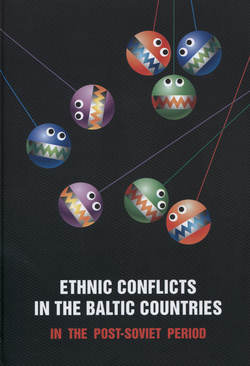Читать книгу Ethnic Conflicts in the Baltic States in Post-soviet Period - Сборник статей - Страница 8
На сайте Литреса книга снята с продажи.
Ethno-political conflicts and national identity in Latvia
Dr. pol. Mihail Rodin
Institute of European Studies, Latvia
Ethnic conflict: causes and extent of leakage
ОглавлениеAn important attribute of the analysis of inter-ethnic conflict relations is to identify the sources and causes of these conflicts. However, tracking the causes of ethnic conflicts methods of sociology faces a number of difficulties due to their species diversity, and the absence of clear boundaries between a number visible on the surface and the deeper reasons, rooted in the sphere of mentality and cultural attributes. Each conflict (or a series of conflicts) is unique, and it is characterized by its intrinsic set of components and their specific combination. Hence, any attempt to introduce an explanatory diagram of the ethnic conflict on the basis of a number of hypothetical causal statements or, on the contrary, verified findings will initially be inaccurate and incomplete.
Thus, the typical causes of ethnic conflicts among experts and representatives of the mass consciousness in Latvia indicate ethnic origin and language of the titular nation, the attitudes to the historical past and its interpretation, the fear of modern Russia. In order to determine possible causes and degree of the flow of ethnic conflicts in Latvia, there have been several questions to the respondents, providing a formalization of the responses. The question: “To what extent are you concerned about…“ ethnic conflicts in Latvia, 27.8 % responded positively Latvians, 36.6 % and 41.0 % Russian members of other groups. Table 3 shows the possible confrontation between the ethnic majority and the ethnic minorities. If the question on ethnic conflicts in general are concerned, only a quarter of the respondents, the opinion of a possible confrontation between the two groups have expressed about 15 % of the respondents. As is seen, the majority of respondents do not consider it possible ethnic confrontation.
Table 3. Ethno-political conflicts in Latvia (in%).
Question: Today in Latvia there are different ethnic groups. What is your opinion about a possible confrontation between the two groups? Please identify on a scale of 1 to 5 the extent to which this confrontation possible *.
* Presented only positive answers: “The confrontation is possible,” “Confrontation in unlikely.“
As the data in Table 3, in the case of a possible confrontation is only a small part of the 7.7 % of respondents (mainly from the non-titular nation), oriented to overt physical collision. Basically, according to the respondents, in case of a possible confrontation will only acute oral exchange (43.3 %).
Table 4. The causes of ethnic confrontation (in %).
Question: In your opinion, what are the reasons for this confrontation, to what extent? Please use a scale from 1 to 5, where “1” means – to a large extent, and “5” means – in a small extent. (One answer in each row) *.
* Presented only positive answers: “To a great extent,” “To a small extent.”
Analysis of the causes of ethnic conflict in Latvia dedicated to table 4. Among the causes of ethnic conflicts in Latvia, creating the widest medium for manifestation of active of interethnic interaction may include: economic and political inequalities of ethnic groups, economic crisis, and the threat of assimilation, the power struggle
between the elites of ethnic groups, lack of citizenship, and the impact of Russia. The data show that the hypothetical set of causes of ethnic conflicts sufficient to express the position of half of the respondents. Moreover, the lack of citizenship and the influence of Russia as the causes of ethnic conflicts indicated twice as much Russian and other ethnic minorities, which was to be expected.
